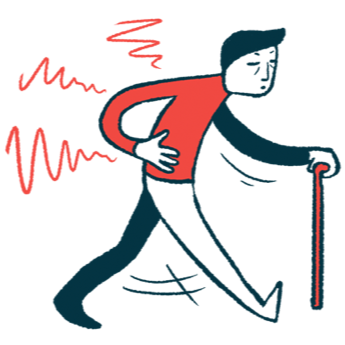Study ties central neuropathic pain to more severe emotional burden
These MS patients have more areas with chronic pain and higher anxiety

Central neuropathic pain — the kind resulting from damage to the brain and spinal cord — appears to be more severe and widespread and to cause more emotional burden in people with multiple sclerosis (MS) than pain in muscles and joints, according to a recent study.
Regardless of pain type, MS patients with pain reported more stress, more often said the pain interfered with their daily function, and tended to have more catastrophic thinking related to pain.
Still, those with central neuropathic pain had more regions with chronic pain, significantly higher levels of anxiety, and more commonly reported high psychological distress.
The findings suggest that identifying and reducing the emotional burden of chronic pain in MS patients may be critical to effectively manage patients and improve their well-being.
The study, “Emotional burden among MS patients: associations between specific chronic pain diagnoses and psychological features,” was published in the Journal of Neurology.
In MS, the body’s own immune system mistakenly attacks healthy parts of the brain and spinal cord, leading to a range of symptoms, including vision problems, mental health issues, and chronic pain.
Up to one-third of MS patients experience central neuropathic pain, which occurs when nerve fibers in the brain and spinal cord become damaged and send the wrong signals about pain. This results in feelings of electric shocks, pins or needles, and numbness or tingling.
In turn, patients may also experience musculoskeletal pain, or pain in muscles and joints, which often arises due to muscle weakness, problems with posture, and fatigue.
Living with chronic pain can take a toll on a patient’s mental health and well-being. However, whether distinct kinds of pain contribute differently to the emotional burden of MS patients is unknown.
Central neuropathic pain versus musculoskeletal pain
To know more, a team of researchers in Israel compared the emotional burden and pain severity of MS patients with central neuropathic pain versus musculoskeletal pain.
A total of 85 patients with chronic pain for more than six months were included in the study; 55 had central neuropathic pain and 30 had musculoskeletal pain. There also were 40 patients without any acute or chronic pain and 30 healthy individuals who served as controls.
The kind of pain was determined with the DN4 questionnaire, where a cut-off of four points is used to discriminate neuropathic pain from non-neuropathic pain.
The two pain groups were generally similar in their clinical and demographic factors, but those with central neuropathic pain had a shorter disease duration (6.8 vs. 9.8 years) and more commonly had relapsing-remitting MS (89.1% vs. 65.5%).
People with central neuropathic pain also generally had more severe pain — as determined by scores on the Pain Rating Index, showing a mean of 6.6 points higher than in those with musculoskeletal pain (28.35 vs. 21.75 points) — and had about twice as many regions affected by pain (mean 7.07 vs. 3.17), and had a higher level of the sensory component of pain.
These findings indicate that central neuropathic pain “was more severe and widespread in the body” than musculoskeletal pain. “Sensory disturbances that accompany [central neuropathic pain], such as electric shocks, pins and needles, and numbness” may contribute to this difference, the researchers noted.
Both groups experience more stress
Both patients with central neuropathic pain or musculoskeletal pain experienced more stress than those without pain or healthy individuals. They also tended to catastrophize pain and to feel that pain interfered with their daily life and well-being.
However, while all MS patients reported more severe depression over the previous week than healthy individuals, those with central neuropathic pain reported significantly higher levels of anxiety than all other groups.
When the researchers divided all participants by level of emotional burden into high, moderate, and minimal based on the results of the clinical scales, they found that more than half (56.6%) of those falling into the high emotional burden group had central neuropathic pain.
The group with minimal emotional burden was comprised mainly of pain-free patients (44.4%) and healthy individuals (33.3%), whereas patients with central neuropathic pain (16.7%) or musculoskeletal pain (5.6%) represented a smaller proportion.
While the study did not take into account factors such as cognitive impairment and fatigue, its findings suggest that central neuropathic pain appears to be more severe and widespread and to cause more emotional burden than musculoskeletal pain.
“Employing strategies aimed at identifying, monitoring, and reducing the emotional burden among chronic pain patients with MS, particularly among those with [central neuropathic pain], thus seems imperative in order to effectively manage the comorbidity [coexistence] of the two and promote a better individually based care,” the team concluded.







